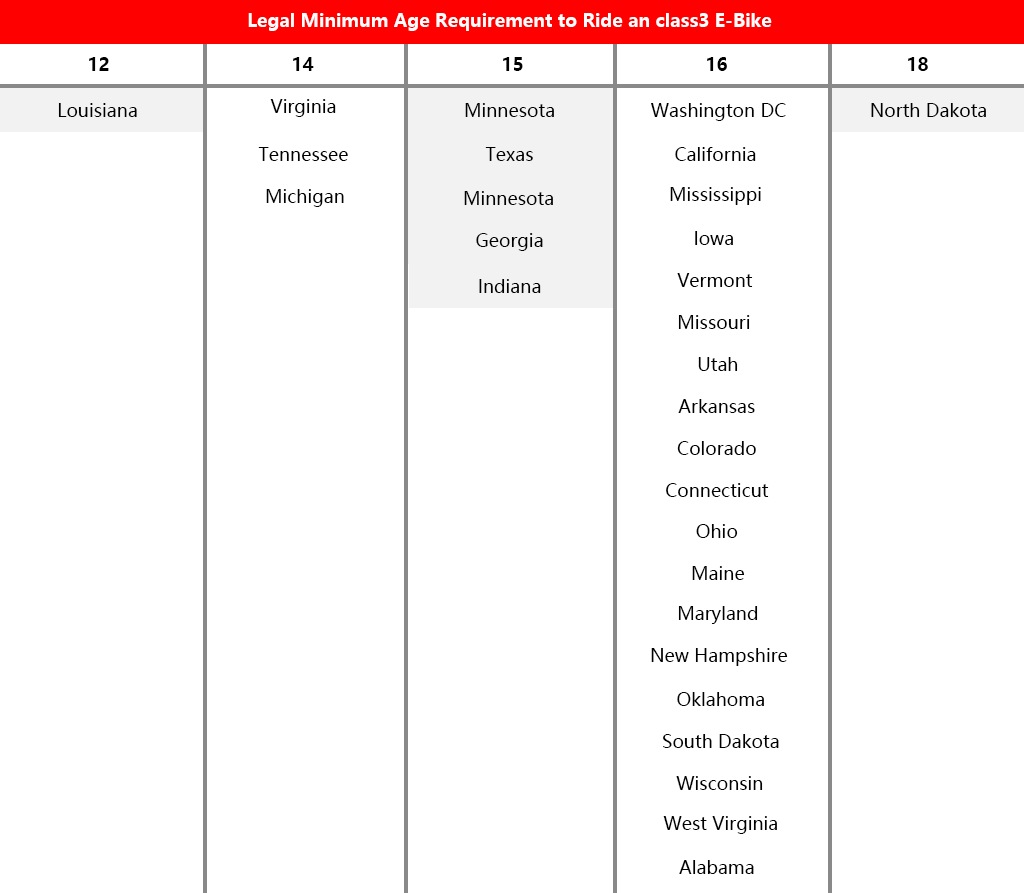Regulations of Ebike You Should Know in the United States
Electric bikes are becoming more popular as a fun method to explore the outdoors, an eco-friendly alternative to car vacation, and valuable vehicles for commuting. HJMBIKE Toury and Step-thru electric ebikes can even go off-road and help you go everywhere you want to.
The e-bike market has grown more than 23% by 2020, year on year, and it is expected to grow further in the next decade. The popularity of e-bikes has outpaced e-bike regulations in the U.S. and has many states catching up.
Whether you are an experienced ebiker or a newbie before you have fun on an HJM e-bike, make sure you understand your state's current regulations and policies, and anywhere else you plan to ride.
Are electric bikes legal in the United States?
Ebikes or electric bikes are legal in the United States. Under a federal law enacted by Congress, HB727, an electric bicycle is referred to as a "low-speed electric bicycle," which is defined as "a two- or three-wheeled vehicle with fully operable pedals and an electric motor of fewer than 750 watts (1 h.p.), whose maximum speed on a paved level surface, when powered solely by such a motor while ridden by an operator who weighs 170 pounds, is less than 20mph."
However, it may have little difference when it comes to different states.
Ebike Classification
Many states have defined an electric bike, as the following picture shows:

Twenty-six states have classified ebike into three main types. These three classes could be generally described as:
1. Class 1: pedal-assist electric bikes with low speed and with a motor that is activated through pedaling. The motor will cease to provide assistance when the bike reaches the speed of 20 mph.
2. Class 2: throttle electric bikes with a motor that is geared by a throttle(it could be grip-twist or a button), which could be used even without pedaling. This class of ebikes has a maximum speed of 28 mph. HJMBIKE Toury and Step-thru belong to class 2 e-bike. HJM ebikes are the most cost-effective among similar bikes. It's selling like hotcakes!
3. Class 3: also pedal-assist electric bikes, same as class 1, but the maximum speed is 28 mph, and they are equipped with a speedometer.
Please check more information here.
Any Age Limitation?

From the picture, most of the states restrict people under 16 years old cannot ride an ebike of class3. In North Dakota, If you are 18 years old and want to ride a class3 ebike, you must wear a helmet. In Utah, a person under 14 cannot ride an e-bike on public property unless supervised. Meanwhile, all cyclists riding Class 3 e-bikes must wear a helmet when riding if they are under 21 years old. In West Virginia, passengers on Class 3 e-bikes under the age of 15 must be on an e-bike driven by someone who is over 18. And all riders of e-bikes under age 15 must wear a helmet when riding.
Is a License Necessary?

Riding an ebike in states with the three classification system do not need registration, license, and insurance generally, which is used to make a distinction between electric bikes and other moped vehicles. But a label that shows the classification number, top assisted speed, and motor wattage is needed in these 26 states.
For example, Idaho explicitly legislates mopeds and motorcycles are not e-bikes and exempts e-bike riders from license and registration requirements. Cyclists in Hawaii require to register their e-bikes and pay $30 at one time. In Alaska, ebikes are not allowed on sidewalks and bike paths. For trails, it is better to concult your local land management agency.
In general, there are six states where ebike lovers need a license because they don't have a distinct law of ebike: Alabama, Illinois, Massachusetts, Missouri, New Mexico, and North Dakota.
Conclusion
With the continuing popularity of electric bikes, specific laws for electric bikes will be proposed, and the law system of electric bikes will be improved. If you are interested in electric bikes, please pay an eye on the future change.
Affix
























